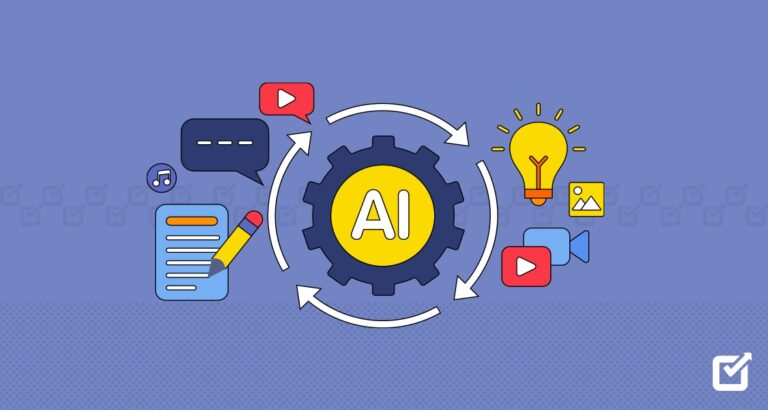Riding the Wave Key Trends in Computer Technology in 2025
Computing technology in 2025 is in a rapid state of evolution. What once seemed like the stuff of research labs is increasingly becoming part of commercial, enterprise, and even personal use. From more autonomous artificial intelligence to quantum leaps in hardware, the landscape is transforming—and fast. This article explores several of the most significant trends shaping computer technology now, how they might affect various sectors, and what challenges they bring along.
1. Agentic AI: From Tools to Independent Actors
One of the most prominent trends in computing this year is the rise of agentic AI, or AI systems that do more than just respond to prompts—they plan, act, and adapt more autonomously. Rather than simply being reactive systems, agentic AI can initiate actions, adjust strategies, and make decisions in more dynamic environments. moderntechreport.com+3Forbes+3LinkedIn+3
Why It Matters
- Efficiency & automation: Tasks that require multiple steps or decision points can be partially or completely offloaded, freeing human workers for oversight, higher‐level thinking, or more creative tasks.
- Scalability: Organizations can deploy agentic systems for monitoring, optimization, or response in environments where real-time human involvement is limited (e.g. network security, supply chain logistics).
- New interaction models: Instead of giving instructions step by step, users can define goals or constraints, and let the agentic AI figure out how to achieve them.
Applications & Examples
- Autonomous operations in IT infrastructure (like self‐healing systems, predictive maintenance) LinkedIn+1
- Virtual assistants that go beyond answering questions—e.g., agents that monitor your calendar, email, and tasks and proactively suggest actions or even initiate them.
- Agentic AI being embedded in consumer devices (smart phones, PCs) and industrial settings. LinkedIn+1
2. Quantum & Post-Quantum Technologies
Quantum computing is no longer just theoretical. Progress in building larger, more stable quantum processors, and growing investment in error correction and noise reduction, are making quantum systems more viable for certain tasks. Business Insider+4MathijssenFit+4Forbes+4
Parallel to the advances in quantum hardware, there’s a rising concern—and response—around post-quantum cryptography: methods of encrypting data that remain secure even in a world where quantum computers are capable of breaking many classical encryption schemes. Forbes+1
Key Drivers
- Increasing computational demands from AI, simulations, and optimization tasks that classical computers struggle with.
- Need for future-proof security as quantum capability improves.
- Competitive pressures among nations, research institutions, and big tech companies to demonstrate quantum breakthroughs.
Challenges
- Hardware instability: maintaining coherence, reducing error rates, scaling qubit counts.
- Integration: building hybrid classical-quantum systems that work practically.
- Standards & regulation: for quantum secure encryption, interoperability, and ensuring that security promises are actually met.
3. Edge & Hybrid Computing: Data Where It Needs to Be
With more devices now generating vast amounts of data at the edge (IoT devices, sensors, mobile phones, etc.), there is growing momentum toward processing data closer to where it’s generated rather than sending everything to the cloud. Edge computing reduces latency, improves privacy, and often reduces costs of transmission and centralized storage. Wikipedia+3fastandfacts.com+3LinkedIn+3
Alongside pure edge, hybrid architectures combining edge, on-device, and cloud computation are rising. This lets systems optimize for speed, privacy, cost, and power use dynamically. LinkedIn+2Wikipedia+2
Use Cases
- Real-time monitoring: industrial automation, autonomous vehicles, smart cities.
- On-device AI: smartphones or computers that can run AI models locally for tasks like voice recognition, image processing, etc., reducing dependence on cloud and improving response times. LinkedIn+1
- Healthcare devices and wearable tech that need fast responses and black-box reliability.
4. Generative AI, Multimodal Models & AI-Embedded Devices
Generative AI has had a huge impact lately—creating text, images, code, and more from minimal input. The trend is pushing further: models are becoming multimodal (able to handle text, image, audio, video together), more efficient, more deployable in small devices or offline, and being embedded in everyday hardware. LinkedIn+2Statista+2
Impacts
- Content creation: designers, marketers, media can leverage AI to prototype, generate visuals or scripts, etc.
- Tools for developers: AI generating code, helping debug, helping design, reducing boilerplate.
- Devices that respond to voice plus visuals plus gesture, making more natural interfaces.
Concerns & Constraints
- Ethical issues: deepfakes, misinformation, bias in generated content.
- Resource demands: large models need lots of compute, power, and memory. There’s growing interest in “lighter” models or approaches that reduce computational cost.
- Privacy: sending data to cloud servers vs local processing.
5. Spatial Computing & Immersive Experiences
The boundary between physical and digital is being further blurred by immersive technologies: virtual reality (VR), augmented reality (AR), mixed reality (MR), and more broadly, spatial computing. These aren’t new ideas, but the maturity is improving—better hardware, better tracking, better integration with other systems. Bluesoft+2Emeritus Online Courses+2
In addition, human-computer interfaces are evolving: gestures, voice, gaze, possibly even brain-computer interfaces in the longer term. Interaction is becoming more natural. MathijssenFit+1
Examples
- AR/VR being used in training, education, design, remote collaboration.
- Spatial computing for design and engineering—seeing 3D prototypes, overlaying data on physical objects, etc.
- Entertainment and gaming pushing for more immersive environments.
6. Energy Efficiency, Sustainability & Green Computing
As computing power grows, so do its energy requirements. Data centers, AI training workloads, high performance computing all consume large amounts of power. Concerns about cost, environmental impact, and regulatory pressure are pushing the industry toward more sustainable approaches. Statista+3ieee.org+3moderntechreport.com+3
Areas of focus include:
- Efficient cooling systems (new chip cooling, liquid cooling, etc.).
- Renewable energy power for data centers.
- Better hardware designs (low-power chips, better fabrication, neuromorphic and photonic computing).
- Lifecycle and e-waste management: modular hardware, repairable designs, recycling.
7. Security, Privacy & Post-Quantum Safety
With everything getting smarter, more connected, and more autonomous, the attack surface simultaneously increases. New models of threat—malware, adversarial attacks on AI, data poisoning—are evolving. Also, privacy expectations and regulations are tightening across many jurisdictions. Statista+1
Moreover, the advent of quantum computing will threaten current cryptographic methods, so post-quantum cryptography and quantum-resistant algorithms are becoming more important. Forbes+1
8. Neuromorphic & Alternative Compute Paradigms
Complementing quantum computing are other efforts to rethink how computers compute:
- Neuromorphic computing: architectures that mimic brain structures—neurons, synapses—for efficiency in tasks like pattern recognition and sensory processing. Forbes+1
- Photonic computing: using light (photons) instead of electrons to move information, potentially enabling much higher speeds and lower energy usage for certain tasks. arXiv
- Exascale & supercomputing: massive parallelism, optimizing throughput, efficient hardware and software co-design. Wikipedia+1
Implications & Challenges
While these trends offer enormous potential, they also bring challenges:
- Infrastructure & Resource Readiness
Many of these technologies—agentic AI, quantum computing, edge compute—require both hardware and software ecosystems to mature. Power supply, cooling, network bandwidth, data pipelines, training data, etc. - Skill and Talent Gap
Integrating agentic AI or quantum systems demands new skills. Many organizations are working to reskill or upskill workers. LinkedIn - Ethical, Regulatory, and Security Risks
Privacy, bias, misuse are always concerns. With autonomous systems, the ability to audit, explain, and control is vital. Quantum and AI also pose challenges for cryptography, data sovereignty, and regulation. - Energy and Environmental Costs
The mounting energy demands of AI training, data centers, cooling, etc. Sustainability must be central or the environmental costs could be severe. - Integration & Interoperability
With hybrid architectures (cloud-edge-on-device), different compute platforms, quantum + classical, etc., ensuring that components work together is non-trivial.
What to Watch
If you’re a technology professional, business leader, or developer, here are some concrete things to watch in the near term:
- Emerging hardware platforms: new NPUs (neural processing units) embedded in laptops or mobile devices; new chip cooling innovations.
- Quantum computing providers opening up access (quantum cloud services) and progress in error correction.
- Rise of “AI PCs” or devices with local (on-device) AI capabilities.
- Regulatory developments around AI safety, privacy, and post-quantum encryption.
- New software paradigms for agentic AI: how to define goal, constraints, oversight, ethical guardrails.
- Advances in immersive interfaces or spatial computing hardware.






